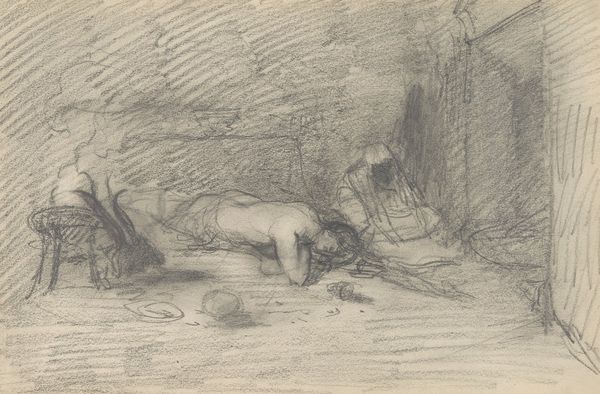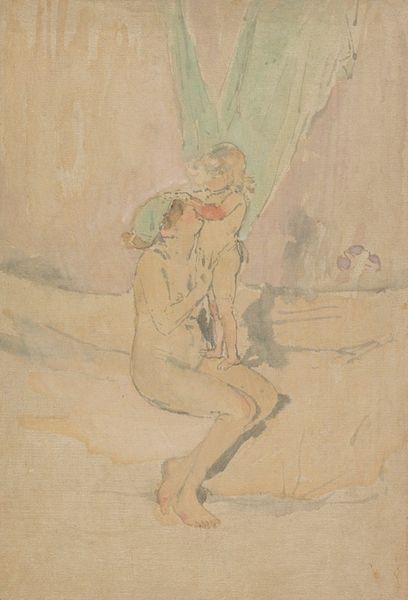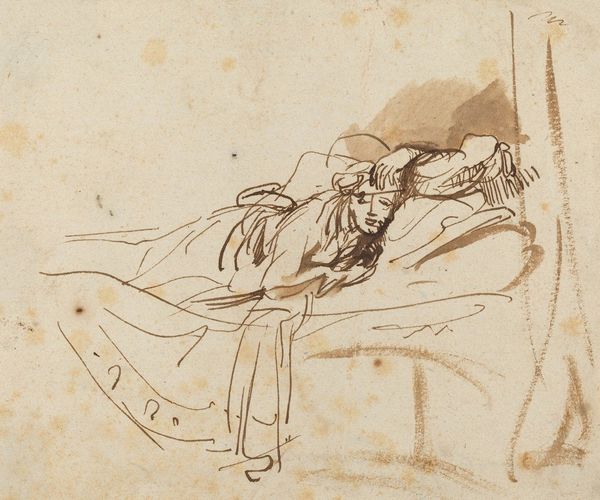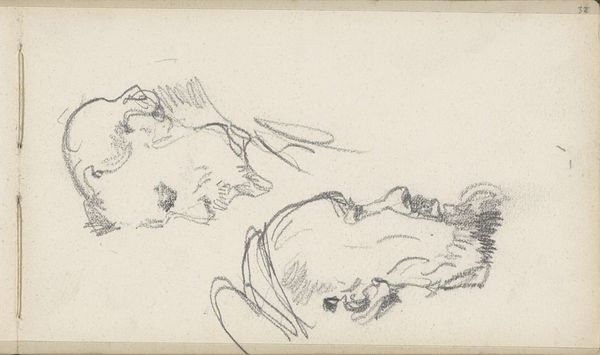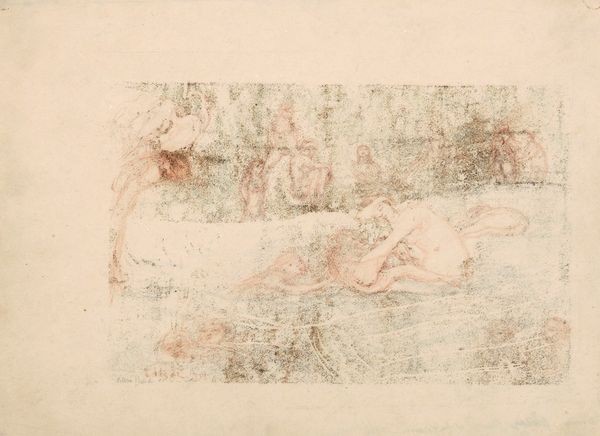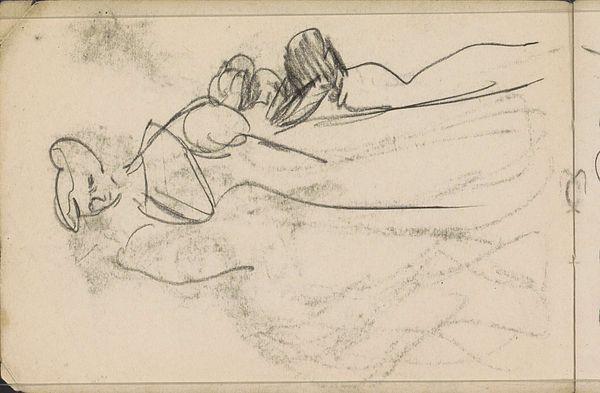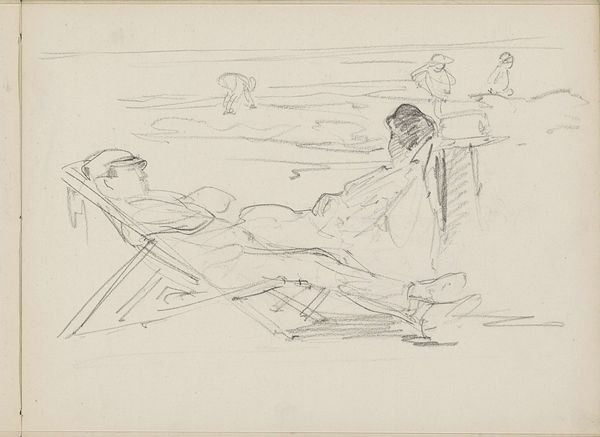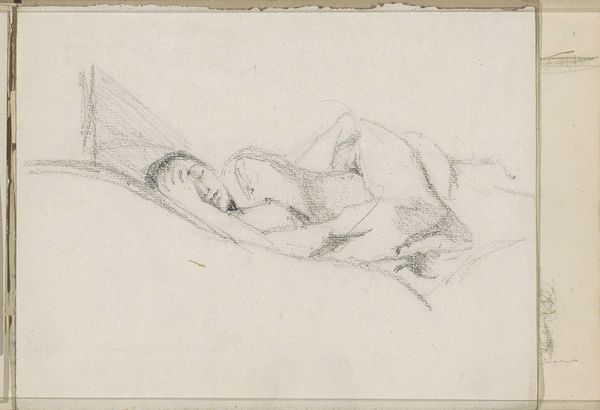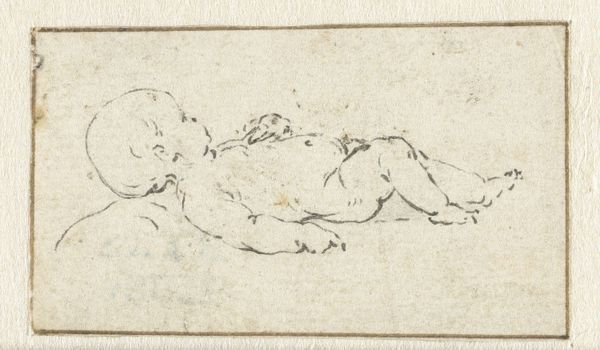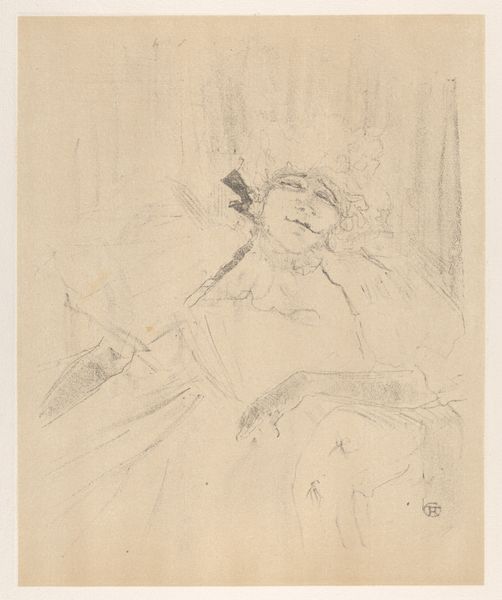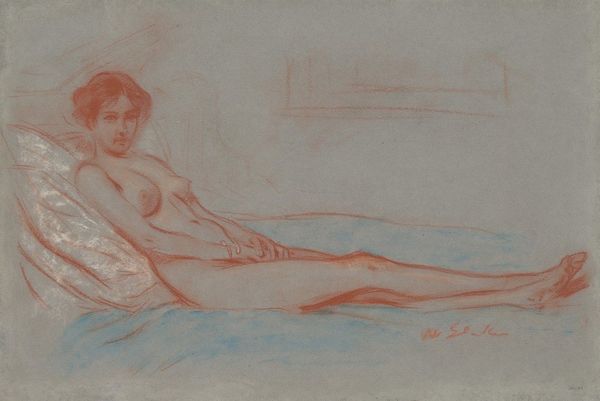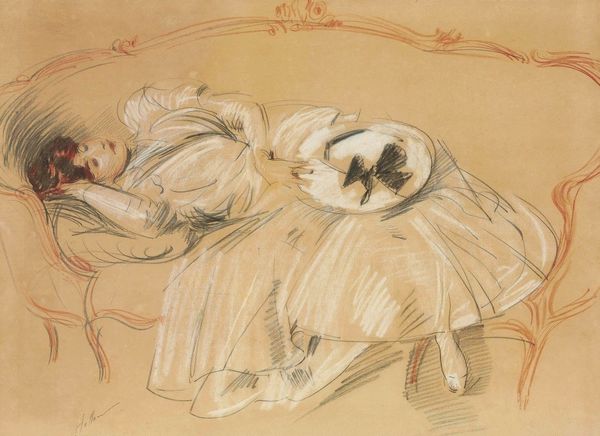
drawing, print, etching
#
portrait
#
drawing
#
art-nouveau
# print
#
etching
#
figuration
#
realism
Copyright: Public Domain: Artvee
Curator: I am immediately struck by the fragility, the utter ephemerality of this image. Editor: Here we have James Abbott McNeill Whistler's "Draped Figure Reclining," an etching from 1892. It's quite small. What are you seeing that evokes such a strong response? Curator: It's the linework, so delicate it seems a breath could erase it. And the almost washed-out colors lend a dreamy, ethereal quality. I find that remarkable. Editor: The lines indeed carry a heavy weight as Whistler deliberately explored tonal relationships and states of being. Consider also the historical context. At this time, women’s labor in the home often goes unrecognized, the softness and repose may provide a critique of this very process, especially during the fin de siècle, which can provide the impression of effortlessness, whereas making such a piece and being in such domestic settings has social implications. Curator: The subject, relaxed on what appears to be a chaise lounge, doesn’t appear at all carefree to me. In fact I feel the piece may portray a quiet form of protest that can perhaps challenge perceptions of gender and status. This intimate space, this quiet pose, can imply to us all that this interior can offer something other than our initial views might assume. Editor: I understand the reading, however the formal components point in a different direction, perhaps suggesting that any narrative function must go in hand with a critical understanding of the tonal nuances within the picture, while offering complexity. Curator: Whistler uses etching, a traditionally reproductive medium, and transforms it into something uniquely expressive. Etchings could be replicated on paper using his process for an affordable price. That shifts notions about what kind of image this is. The material context of its making feels very intentional, therefore his access becomes accessible to an increasing audience that would not have been possible years prior. Editor: But it also enhances the intimacy. Think about the relationship of the artist and the plate, then consider how they materialize themselves in each print. Whistler brings an understanding of beauty to something that once produced functional results, using the technique in many novel and unexpected ways. Curator: Exactly. What do you take away from the material and its message now, given all of our observations about the image and Whistler’s work? Editor: Ultimately, an incredible work that demands repeated looks. Every return invites a richer perspective than before, an invitation to look deeply into art's forms.
Comments
No comments
Be the first to comment and join the conversation on the ultimate creative platform.
